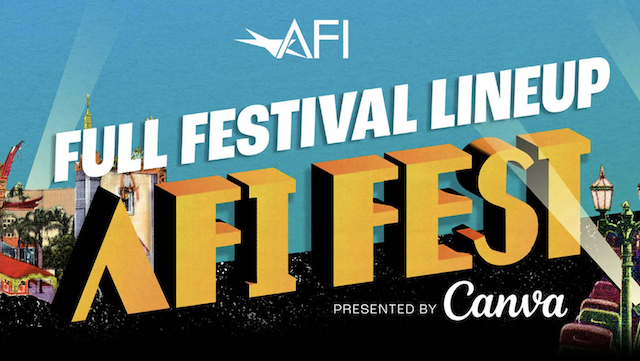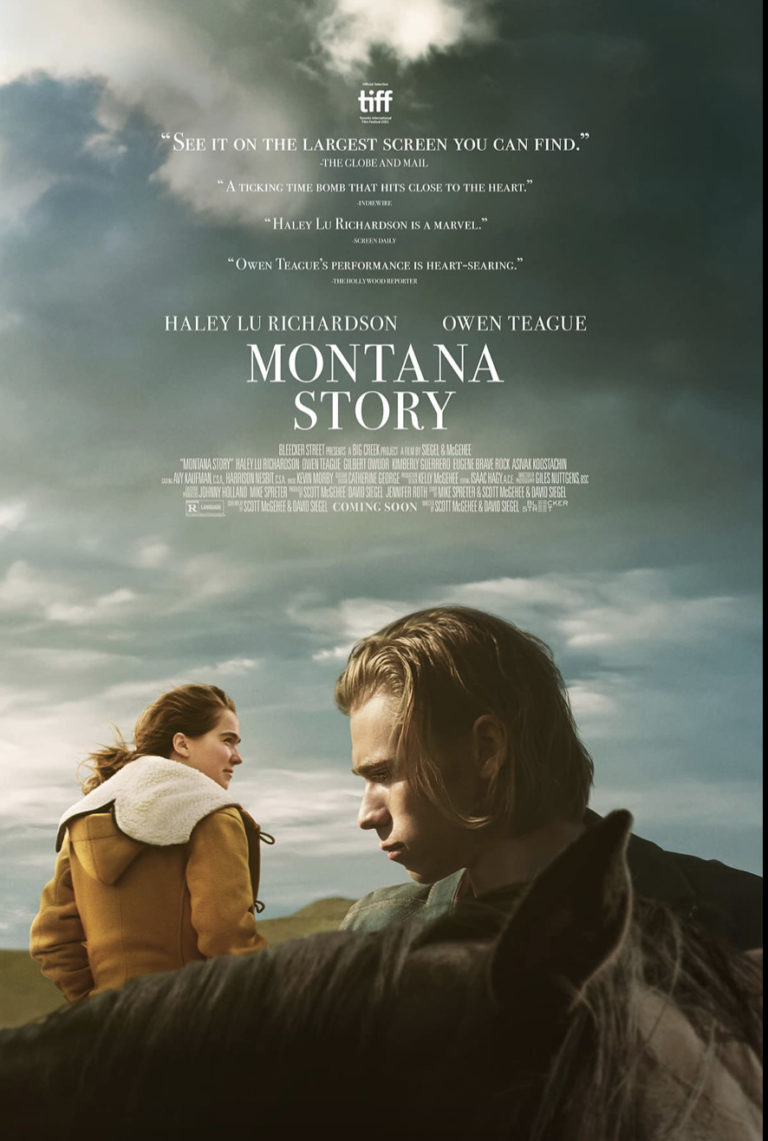
Synopsis :From the acclaimed writer/directors Scott McGehee and David Siegel (What Maisie Knew, The Deep End) comes a neo-Western with an emotional tremor hiding beneath it. Two estranged siblings (Haley Lu Richardson, Owen Teague) return home to the sprawling ranch they once knew and loved, confronting a deep and bitter family legacy against a mythic American backdrop.

-PHOTO by: Dave Allocca/StarPix
Directors Scott McGehee, David Siegel and Actor Owen Teague
Q: You started this film and shot it all in 2020 during the worst of the pandemic lockdown. Where did it come from, what was the origin of it and how did the pandemic or the lockdown affect the shape that the film was made in?
SM: We were working on another project called “The Friend” before the pandemic hit. Everything slowed down and we were going to wait out this Covid thing for a couple of weeks and then get “The Friend” back up on its feet. It just got longer and longer, until — it must have been about June or July of 2020 — we decided we had to think of something else to do if we wanted to make a film. And we did. We were desperate to.
I think in July, we started writing this and decided to set it in Montana. That was [the] trap we built for ourselves. If we were going to shoot it in Montana, we had to get it done before winter came. At the time we were still sheltering in our apartments and not even working together. Yet, we wrote the whole thing talking to each other on the phone. We wrote it in a matter of weeks, and then invited some people to join us in Montana. For most of us, it was the first time out of our apartments or to go anywhere, once the lockdown shut things down.
DS: I’d spent the first eight months of the pandemic in Florida with my parents. So that was the first time out of the house, and it was suddenly Montana and was very different.
SM: I was going to add, Owen [Teague] auditioned for us from his parents’ attic. He sent us an audition of the scene that he performed, a confession scene to Ace. He had to do that whole scene by himself in his attic.
OT: It was sad.
Q: How did you know he was the right person for that role, and when did you first meet in person?
SM: We didn’t meet until everyone arrived in Montana. We hadn’t met Haley Lu [Richardson] either, until she arrived in Montana. We had been talking to Haley over Zoom about the part of the friend, so we got to know her a little bit. We had her in mind when we started writing the script.
But we wrote a kind of American-Western-young-man character, a kind of archetype, sensitive, coltish, someone who is just coming into his own as a person. Owen really stepped into it in a way that [worked]. I think Owen has said many times, there’s rarely been a role that you felt like you just stepped into. So we felt supremely lucky.
Q: What was it about that role that really spoke to you?
OT: That’s the funny thing. I didn’t know at the time and I’m still not quite sure. There’s something about the way that Cal carries himself and how this horrible half-hour or 15 minutes of his life has shaped the rest of his entire existence that I think we all go through in some way — be it one event or multiple events. It affects how he views himself as a person and as a man, and it was something that I identified quite strongly with in that I don’t think it’s portrayed onscreen a lot. That reflection he sees in himself is of weakness.
SM: I think sometimes with film acting, one’s physical presence is as important as anything in terms of someone being believable, or credible, in a role. Owen is tall and lanky, and has a certain kind of Western look to him, so he brings all that to the table before he ever opens his mouth. There’s a lot of strength in him.
OT: I’ve gotten the word “lanky” about a billion times in the past two days.
DS: If he was playing a wrestler it wouldn’t be appropriate.
OT: I’m not very convincing at that.
Q: Why Montana, of all places? It’s very counterintuitive that you did this film, because you would think during a lockdown you’d do a small-scale film with two people in a room. It would be much easier. Instead, you have all sorts of moving parts: horses, weather, everything that makes it quite a bit more complicated. Why did you do that, and why now?
SM: We didn’t know about the weather.
DS: We didn’t want to do a movie in a room. We thought, “How can we open the film up without exposing a big cast and crew to something that might be dangerous?” Open spaces were certainly something that we had to think about. We were working with a Western story, and [whether] we’d been to Montana or one has been to Montana or not, Montana is a very romantic place I think in our collective imaginations of America.
SM: We hadn’t been to Montana.
DS: No. We wrote the whole film just imagining Montana and looking things up through Google searches. We really weren’t sure when we got off the plane exactly what we’d find.
SM: Some of the story came from the research into the Native American characters and how they inter-relate to family and the land, the mine scene, the open-pit mining that had been going on in Montana for more than a hundred years.
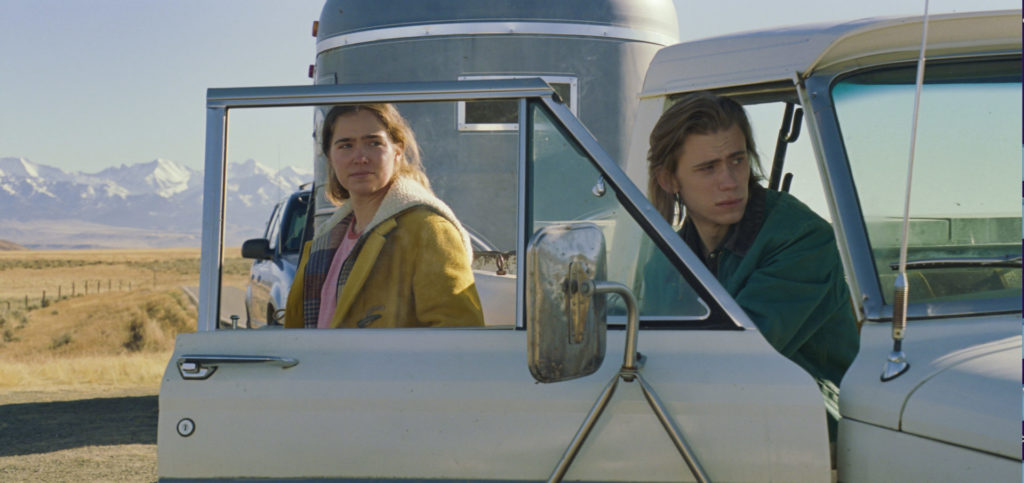
Q: Almost all the reviews and features that I’ve read about the film mention the Western, and some say it’s a “neo-Western” — a western that plays into Western tropes. Do you see it in terms of that genre? Was that in mind when you were writing it?
SM: It very much was. I’ve said the horse was the third or fourth element that we brought to the table and it was because we wanted to work in that register of a Western. We longed to make a Western film. Having grown up in California — especially the central part of California where we’ve both spent a lot of time there — we talked about Western stories before.
We also are very interested in melodramas and family stories, so I guess there’s that.
You see a lot of Westerns that are also very concerned with those same kinds of melodramatic tropes. So it was that kind of Western that we wanted to make.
Q: When you said “melodrama,” that sounded like it’s very over-the-top. Yet one of the beautiful things about this film is that it’s very contained, and the performances are very contained. How did you achieve that? Did you create a backstory for Cal and fill in the gaps of, say, the missing seven years that we haven’t seen him?
SM: Yeah. I did.
Q: And what was he doing all that time?
OT: Well, he was finishing growing up, suddenly without Erin, with just his dad. Which was something that we never actually went into in the movie.
DS: We talked about it a bit.
OT: Yeah, we talked about it.
DS: We talked about holding that in, having to hold what [to Owen] you saw, and the knowledge of that…
OT: What I saw, what I felt. Not just about that but everything because of the kind of person that Wade was. All of those three years until basically he was 18, he was just going to high school with Wade as an up-bringer, and Valentina.
There’s still that really strong relationship with Valentina, at the same time as [he’s] wanting to, needing to, shed himself of this place and get far away. And then he went to college and had some failed relationships.
SM: I just wanted to hint about his relationships.
DS: And a cat.
OT: And a cat, yeah.
DS: The notion, or the idea, that, in Cal’s mind he’s never going to see his sister again, like that door had closed. That she was gone, he couldn’t find her, and she wasn’t ever coming back.
I think Owen really did it credit: that scene when he sees her and he gets out of the car, and he doesn’t approach her initially. He stands away from her — [there’s] that look on his face: the idea that he’s actually seeing his sister again. That’s something that we talked quite a lot about, and I think Owen really realized the kind of gut punch that that was.
OT: I do remember us talking a lot about the blocking of that scene, and how almost dangerous it felt to get close to her.
Q: Having seen this a second time, I really appreciate the arc of what happens here in the film.
SM: Wait til you see it for the third time.
Q: When I saw it the second time, I better understood how you had to get there — to that ending. I want to know how you guys figured out how you got there.
DS: In a way, that’s the plottiest part of the film, like when one thing leads to another. That finally galvanizes Erin. Something happened that in a way resembles what happened seven years ago, but in reverse. That’s what pushes her to finally confront her brother — “Why did you do this?” – which she hasn’t been able to do.
I’m not trying to deflect the question, but that plotted out more like a conventional way.
Q: Do you think that freed him so that he could act? That’s what I caught the second time which I didn’t get so much the first time. Or it didn’t impact me as much.
DS: Well, I think you mean that “the act” as in pulling the plug on [his father].
Q: Turning off the machine.
OT: That always felt very natural to me. This is a little bit not admitting that I would commit murder of my father, but it didn’t feel like somewhere that I had to figure out my past to do [it]. It was like, “Okay, so now Erin and I have finally had this conversation which has been waiting seven years to be had.” Now I have to close this chapter somehow. I have to do something. And even though Wade is about to die, it’s still something that Cal can do, and a kind of unintentional ending to this thing. And that always made sense to me.
SM: I think that’s how we talked about it.
OT: Yeah.
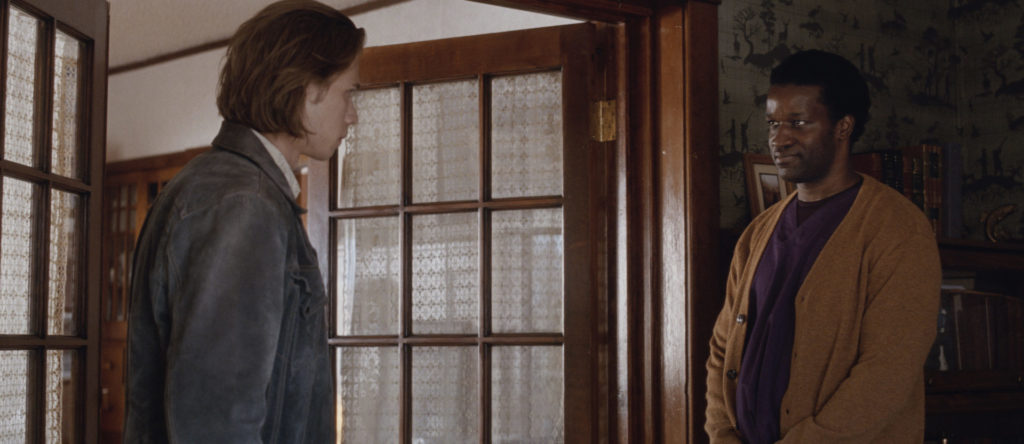
Q: Was the film shown at the film school in Boseman?
DS: We haven’t. We took it back to Boseman and showed it at the Ellen Theater. I don’t know if John Ludin, the guy who plays the lawyer [Don] in the movie — he’s an actor and also runs the Theater in Boseman. So that’s the only time we screened there so far. I think it opens there on May 27th.
SM: It also played in the Montana Film Festival in November, in Missoula.
Q: How long did it take you to film this movie?
SM: We had about a 26-day shooting schedule. We were very lucky, with Covid — we were following all the return-to-work protocols that the film unions and the film business had come up with. And with a day and a half to go — literally a day and a half to shoot — Rob Story, who plays Wade, the father, tested positive for Covid. It shut the project down for two weeks.
It was a real scramble, because Owen was going off to another project, and Haley was going off to another project. But we managed to keep it all together, because the alternative was going to be to come back in January. And January in Montana is… January in Montana, so we didn’t want to have to do that.
DS: I just want to say we got shut down on… Owen’s big scene. The scene he auditioned with, was a scene that we all spent a lot of time thinking about, and preparing for, and we were making sure Owen was ready. That the set was all ready for Owen. It was the confession to Ace, a big, difficult scene for Owen.
So we had it broken down. When you film, you have to have things broken up, for lighting and so on. We had it broken up so that the first half of the scene was the first half that plays where he’s by the desk, and then he walks over to the window and finishes the most difficult part of the scene. We’re in the middle of this very difficult scene, we just finished up this beautiful work and Owen was really delivering it.
OT: We’re halfway through. Half-way through the scene! The first part of the speech is done and so now I’m going over to the chair to sit down and continue with the second part of the speech.
SM: And Nurse Amber [Barone], our on-set Covid supervising nurse, came in and stopped everything. We had to clear the set.
OT: We’re halfway through the scene…
SM: So the entire crew and cast had to go out to the lawn and sit in a big circle and learn what our fate was: that we had to shut down for 10 days.
OT: And cry.
DS: Rob Story was led away, with his head hung low. He never was symptomatic. He was perfectly fine, he came and saw the movie at the festival. But it was extremely traumatic.
SM: So Owen came back and finished the scene 10 days later.
OT: Two weeks. Just the second half.
Q: As to the visual look of the film, the cinematography, and production design — what were you going for there? What specific theme did you have in mind? Did you have other Westerns as models?
DS: We had looked at a lot of them. We weren’t directly looking so much at movies as direct references to this before we started shooting. We shot it on film because we really wanted the texture of film, because we thought that would lend something to the story.
Scott’s sister, Kelly, is our production designer, so she designed it and the color palette of the movie with our costumer, Catherine George, [who] talked a lot in terms of having them both sit with them on the last day of the costumes, and also to stand out against the landscape.
But as you can imagine, the clothes against the wild — the intimacy of the camera close to our characters and the wide open spaces was something that we talked a lot about with Giles Nuttgens [cinematographer]. This is the fourth movie we’ve shot with him.

Q: The father is dying. If he was brain dead and wasn’t going to revive.
DS: Well, the state that we put him in, we didn’t actually want it to be that he was brain dead, but that he was in a deep coma and he most likely wasn’t going to wake up.
Q: He seemed to be on life-support. And how the son really couldn’t face that.
DS: I guess the way we approached the story, this all happened very quickly. Cal is coming home for the first time and Erin hadn’t been there.
SM: The lawyer says at one point, “This is the way Wade wanted it: to be at home and die at home.” I think there was just that. We wanted to create a feeling that that wasn’t really an alternative — you know, to pull the plug on Wade until it was a necessity.
Q: Is there a point at which Owen’s character forgives himself for not helping his sister? When you were writing the screenplay, did you see a way that he does?
OT: Did we talk about this? I don’t think we did.
SM: Well, what do you think?
OT: I think so. I think that after the conversation with Erin, he begins to be able to. He starts down the long road that he’s going to have to forgive himself. I don’t think it happens quickly, I don’t even think it happens by the end of the movie. I think it probably takes him years, if not for much of the rest of his life. But I hope that someday he does.
SM: I hope we feel that Erin has forgiven him. But Erin has opened that up to him. Erin has led back out, and that’s the thing that begins the process of healing.
OT: Yeah.
Q: And since Haley]Lu Richardson is the character, did you have any conversations with her about that character’s place specifically?
SM: Did we have a conversation with her? We can’t not have a conversation with her.
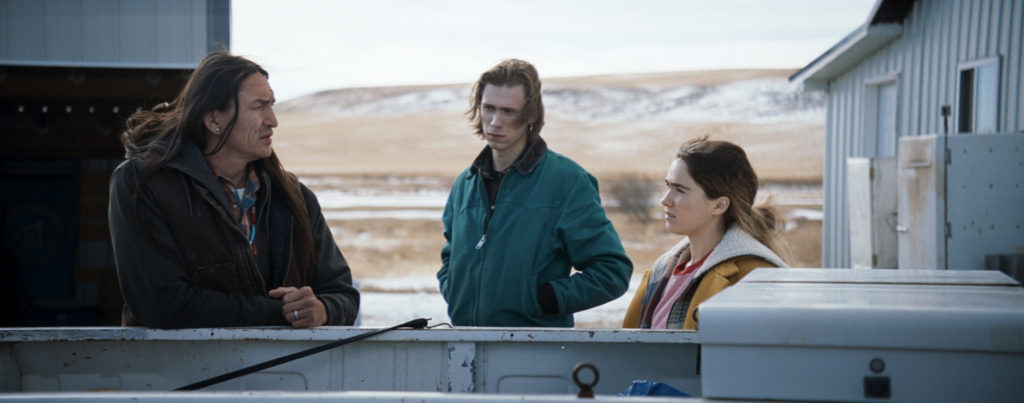
Q: What did you tell her?
SM: As opposed to what I said earlier about Owen, Haley as a person is an extremely gregarious person. We spent a lot of really enjoyable time on Zoom talking to her about “The Friend.” But we were worried that, how were we going to get someone so gregarious into this interior, somewhat angry state that Erin was going to be in.
We thought we had strategies for that before Haley showed up in Montana. But it was all unnecessary because she walked in with the character of Erin in her head. If anything, we had to pull her back, and maybe it was a little too strident at times.
But the two of them together, both such fine actors, we couldn’t have been happier.
Q: It seemed that they both found the balance — didn’t you think so?
SM: Yeah, that’s a nice question, thank you. I think maybe the answer for us is what I was saying earlier [about] melodrama. We as storytellers are really interested in the struggles people have when they can’t communicate — when there’s something broken. It just felt as something natural about [how] we arrive into this story and Erin comes in in an unexpected way. And then exploring that past of regret.
David brought something to the writing process early on. It was to look at a moment of courage where you fail, you don’t make the choice you should make. That’s really what spurred us through the process of examining those. And maybe also because we’re two guys, we felt more comfortable examining that problem that the male character had. I’m sure that was an element also.
Q: The mandolin: that was yours to Owen? And you played it all your life?
OT: Yes. Since I was about nine.
Q: And it has some kind of connection?
OT: It does. I did not know this until we were in Montana and we were about halfway through shooting. I was on the couch in my hotel room playing it one day.
I looked inside and I don’t know why, but inside it said, “Hand Made in Belgrade, Montana.” Belgrade is about five minutes away from Boseman, which is where I was staying. And, you know, I freaked out. I emailed the guy who made it and was like, “Are you still here?” and he was three miles north in Big Fork, so I didn’t go see him. But no, it wasn’t originally part of the movie. It was something that… I forget how it even came up.
DS: You brought the mandolin.
OT: I guess so. I brought it to the set.
DS: Yeah.
SM: You brought it to the set and we realized it could be in the movie.
OT: Yeah.
Here’s the trailer of the film.

